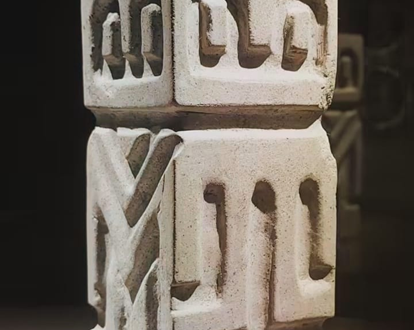agosto 18, 2023
Consorcio Relacional y Socioconstruccionista del Ecuador (IRYSE)
Maritza Crespo Balderrama, M.A. y Diego Tapia Figueroa, Ph.D.
As the days go by and the media informs us about the events in the world, it is increasingly evident that our country is immersed in a climate, in a spiral of violence that not only frightens -in many cases- it paralyzes and leaves citizens without hope or answers.
In contexts in which dialogue has broken down and in which trust in institutions is lost, people tend to stop seeing the possibilities and positive aspects that could exist in everyday spaces and tend to focus their attention, fear, and thoughts on negative events, obstacles, and pain; experiencing helplessness and hopelessness.
Violence is not only a concrete fact with evident, observable, and measurable effects; it is also a sensation, something that can be perceived -even if it is not seen- therefore, it can be an element that significantly marks the lives of those who suffer it, making it difficult to put into practice a critical, reflective and active look at the environment, decision making and, of course, overcoming pain.
Our life is made of stories that others tell about us, and that we tell and tell about ourselves -and others-; those stories build our ways of being. Therefore, the last word is never said, we can reinvent ourselves at every moment, we can redefine experiences, and jointly co-create new meanings.
In this article, we are going to delve into an element that in the therapeutic space in which we work, we have seen quite often, and we seek to strengthen it since it is essential for overcoming and coping with situations of violence: resilience. The ability to mobilize one’s own resilience.
What is resilience?
The term comes from physics. As a natural science, it seeks to explain the process by which matter returns to its original shape and size when it has been subjected to pressure; then, the notion of resilience is related to the resistance of materials. Psychology has taken this term from physics to explain the ability of human beings to overcome adversity, uncertainty, and emotional pain to face life situations to continue on the path towards achieving their goals.
Resilience, then, is a capacity that people have to put into play and enhance their psychological and emotional resources to face crises or complex situations in life. It is the ability to face tough, difficult, and traumatic situations; the ability to overcome adversity, and to do so by mobilizing our resources, and by doing so: emerge stronger.
Although all human beings have this capacity, many have not put it into practice, or have not been able to enhance it, so that it becomes part of the ways in which they face their lives.
How resilient people tend to be?
A resilient person is neither better nor worse than other people; nor is he someone who does not express his emotions, or who has emotional blocks that do not allow him to bond with others, or feel fear, frustration, or pain.
As we have said, resilience is a way of managing the internal, emotional resources that people can put into play, in the face of life’s adversities.
Resilient people assume that living involves a certain degree of difficulty, which is different for everyone. They are the ones who accept that there are things that can happen and that do happen, and who decide to take difficulties as a fact, that they have a beginning and an end; and that somehow, they can become a space for learning and the acquisition of useful experiences for the present and the future.
Although violence is not an «adversity» in itself, since it implies the use and abuse of force, injustice, and mistreatment of one person to another, resilience can be one of the tools that allow decision-making and action, so that people in a situation of vulnerability can get out of it and lead their vital processes and project themselves into the future.
Generally, a resilient person has a great capacity for adaptation and is creative in making decisions. He does not allow himself to be tyrannized by fear, guilt, or resentment.
Can resilience be strengthened?
Being a human capacity, resilience can be strengthened and learned to put into practice. Let’s look at some ways to work on resilience in situations of violence.
1. Know your capabilities and limitations and observe your reactions to violent situations. Someone who exercises resilience often asks themselves how they feel in the face of violence; what impact does violence have on them?
2. Recognize that it is not possible to be in control of everything; that is, to be clear, that there are circumstances, for example, social violence; that are not their direct responsibility. However, a resilient person learns to control their emotions -express them assertively- handle uncertainty, and use creativity to face adversity.
3. Try to be flexible, which means that the resilient person is open to changing plans and goals if necessary. It is required to be open to new ways of doing things, realistically evaluating possibilities, and specifying, step by step, the objectives that are set.
4. Look at circumstances with humor and optimism. It is, perhaps, easier said than done, in the current circumstances; however, the resilient person usually performs a critical analysis of reality that allows them to look at things with humor and laugh at situations and themselves. Optimism is one of the engines of transformation and surrounding yourself with optimistic people and spreading optimism transforms your own environment and makes daily life more bearable.
5. Be open to the learning that can be gained from complex and conflictive situations. Every situation, including violence, contains aspects that can teach something (to protect oneself, to set limits, to seek help, to walk away, etc.). Viewing adversity as a learning experience strengthens resilience.
6. Recognize that you can’t always do it alone. Being resilient also consists of doing an exercise in honesty. Violent situations are not easy to bear alone and the presence of close people, support networks that we have been able to build with friends, family, or work, and the search for professional psycho-emotional support, are essential to understanding situations, analyzing them and build creative ways of coping with violence.
We invite you to choose a lifestyle based on relational ethics, respect for people, and the confidence that each human being and each family has their own resources, which is important to mobilize actively and creatively so that they can assume their own lives in a new and responsible way; generating purposes that enhance the common well-being.
Its purpose (through careful and respectful listening, dialogue, and the mobilization of people’s resilience) is to strengthen personal, family, and social resources to prevent stress from leading to a destructive or self-destructive crisis.
In conclusion, resilience is not the heritage of a few, it is a capacity that we can strengthen with proper practice and guidance. No one is free from pain or suffering, and adverse situations are part of the human future; however, learning and capitalizing on negative experiences to achieve our own and shared goals is essential to transforming our societies and living a full life with dignity, freedom, joy, creativity, and responsibility.
(***) Authorized reproduction of the publication, in May 2023, in the Magazine https://www.maxionline.ec/
Suggested bibliography:
https://iryse.org/enfermedades-graves-y-terminales/
https://iryse.org/serie-a-favor-de-los-derechos-humanos-de-ninos-ninas-y-adolescentes-2/
https://iryse.org/construccionismo-social-relacional-construccion-conjunta-significativa-y-creativa-de-processes-de-transformacion-en-el-process-terapeutico-en-la-formacion-de-profesionales- and-at-the-supervision-clinic-19/
English translation of Bruno Tapia Naranjo.




